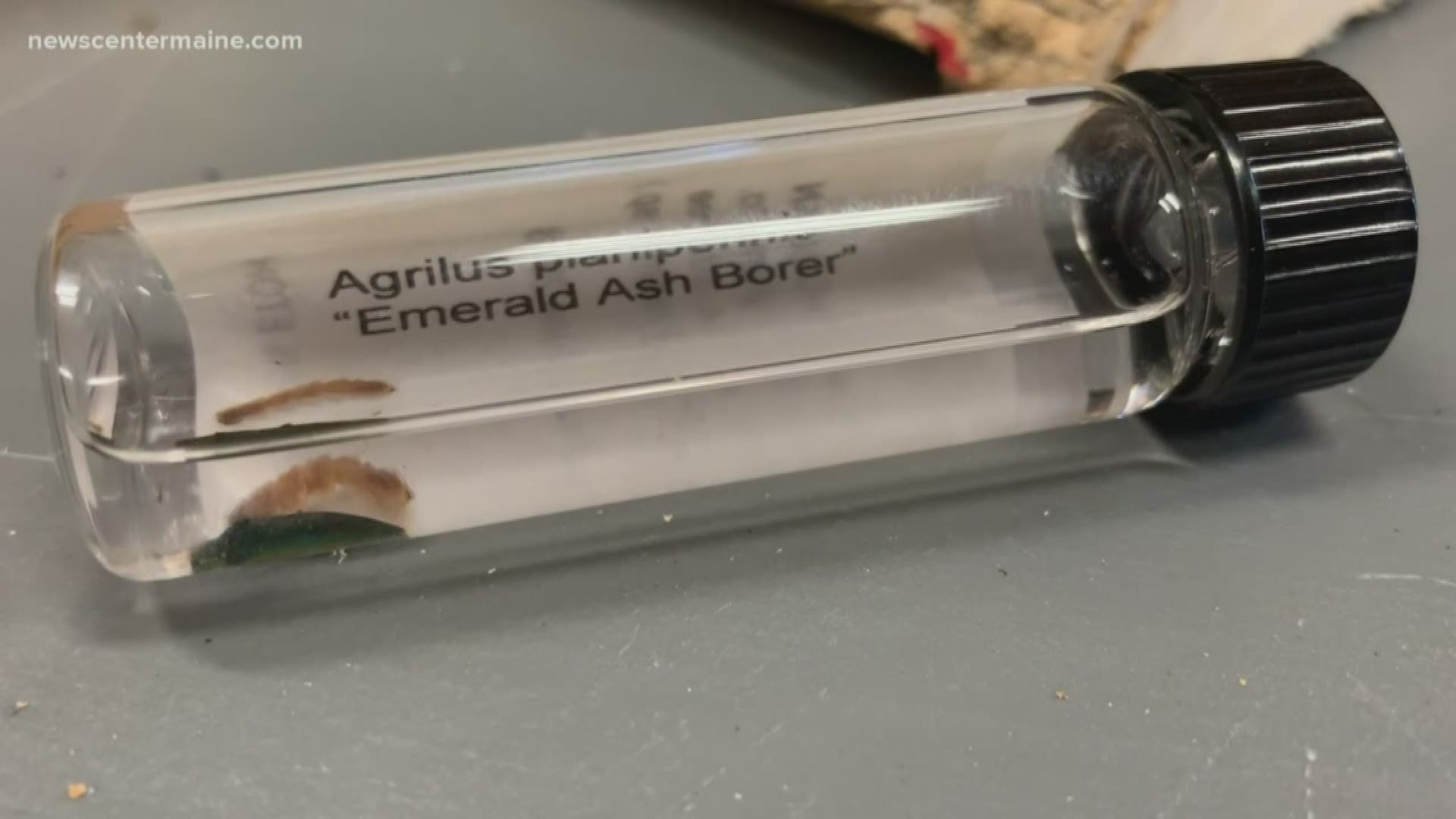ACADIA, Maine — Acadia National Park and the Maine Department of Agriculture, Conservation and Forestry peeled 'trap' ash trees that were girdled in May to attract Emerald Ash Borers and see if the park had signs of the beetle.
After a long day of peeling the tree logs, there was no evidence of the highly invasive beetle in the ash trees of the park.
'Trapping' a tree is when scientists strip off an ash tree in a long band form around the tree, cutting off the flow of nutrients and water between the canopy and the roots. It stresses the tree and causes it to emit chemicals that will attract the Emerald Ash Borers. The beetles lay their eggs in the bark, and when the eggs hatch they begin to feed on the nutrients and water of the tree.
If the insect pest is not detained early, meaning in one or two years, the tree can die.
Emerald Ash Borers were first confirmed in Maine in 2018 when infested ash trees were found in northern Aroostook and York counties. The first case of the beetle was found this year in Portland.
The main goal for the national park is to track the movement of the beetle and hopefully prevent it from spreading into the ash trees of the park.
One of the main reasons that these beetles can move throughout the state is through infested firewood. If you buy wood from a homeowner that harvested it himself, you should keep it within a 50-mile radius, for it to be collected and burned in a close radius. You can also buy wood from the store and it has a label that says it's 'certified heat-treated,' for you to take it anywhere.
The National Park and Maine forest service want people to be on the lookout and learn how to detect the pest from the ash trees:
- Look for branch fractures within the upper canopy
- Bark cracks
- Woodpecker Damage (trees infested with Emerald Ash Borer are often sought out and attacked by woodpeckers, so their traces are sometimes an indicator of the beetle.)
- D-shape exit holes
Ash trees will be trapped again early next year to repeat the process every year and hopefully prevent the spread of the Emerald Ash Borer.

